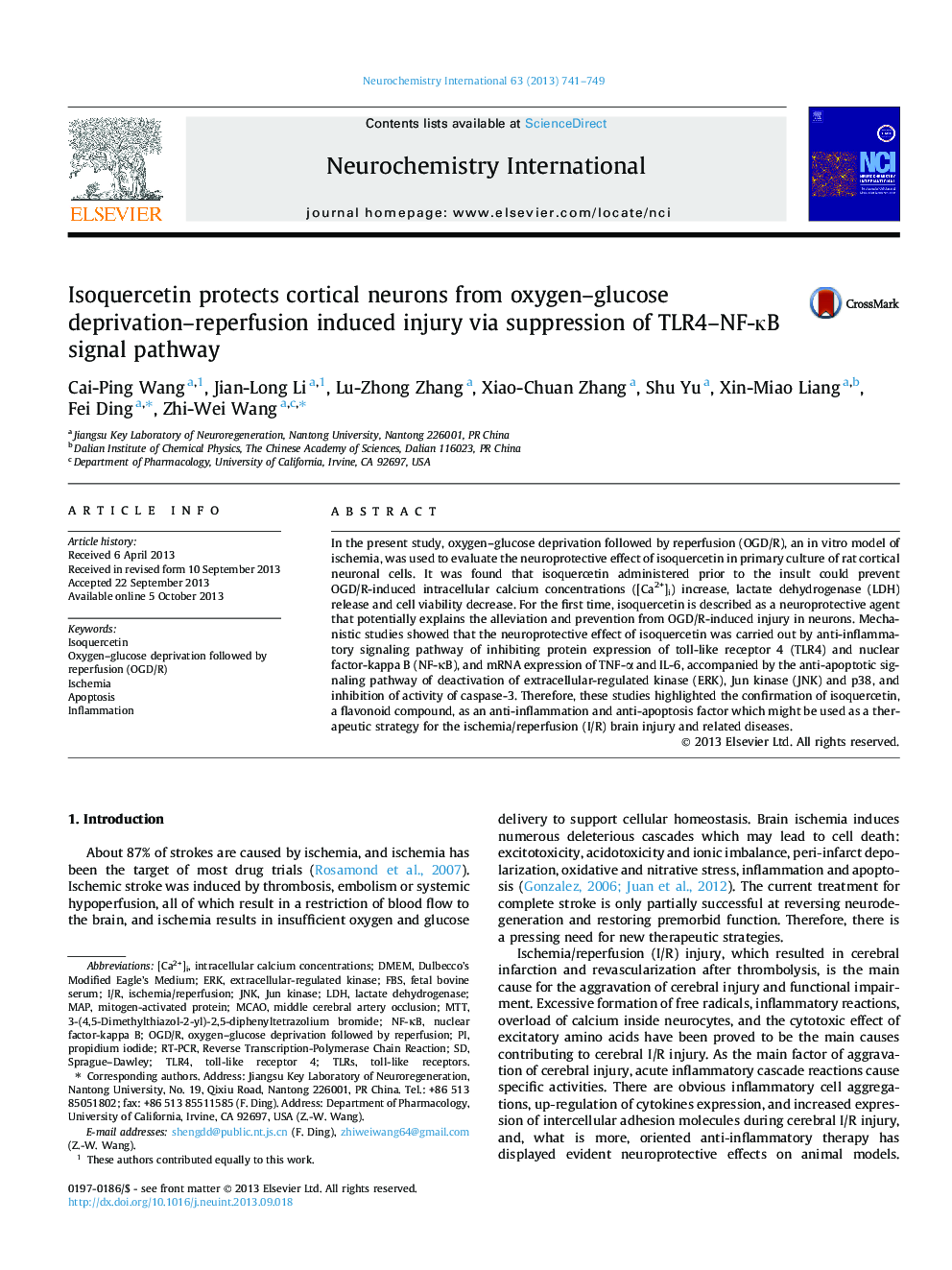| Article ID | Journal | Published Year | Pages | File Type |
|---|---|---|---|---|
| 10958031 | Neurochemistry International | 2013 | 9 Pages |
Abstract
In the present study, oxygen-glucose deprivation followed by reperfusion (OGD/R), an in vitro model of ischemia, was used to evaluate the neuroprotective effect of isoquercetin in primary culture of rat cortical neuronal cells. It was found that isoquercetin administered prior to the insult could prevent OGD/R-induced intracellular calcium concentrations ([Ca2+]i) increase, lactate dehydrogenase (LDH) release and cell viability decrease. For the first time, isoquercetin is described as a neuroprotective agent that potentially explains the alleviation and prevention from OGD/R-induced injury in neurons. Mechanistic studies showed that the neuroprotective effect of isoquercetin was carried out by anti-inflammatory signaling pathway of inhibiting protein expression of toll-like receptor 4 (TLR4) and nuclear factor-kappa B (NF-κB), and mRNA expression of TNF-α and IL-6, accompanied by the anti-apoptotic signaling pathway of deactivation of extracellular-regulated kinase (ERK), Jun kinase (JNK) and p38, and inhibition of activity of caspase-3. Therefore, these studies highlighted the confirmation of isoquercetin, a flavonoid compound, as an anti-inflammation and anti-apoptosis factor which might be used as a therapeutic strategy for the ischemia/reperfusion (I/R) brain injury and related diseases.
Keywords
NF-κBintracellular calcium concentrationsIsoquercetinTLR4MCAOERKRT-PCRDMEMFBSJnk3-(4,5-dimethylthiazol-2-yl)-2,5-diphenyltetrazolium bromideI/RMTTOGD/RTLRs[Ca2+]iSprague–Dawleyinflammationmiddle cerebral artery occlusionIschemiaischemia/reperfusionApoptosisfetal bovine serumNuclear factor-kappa Blactate dehydrogenaseLDHDulbecco’s modified eagle’s mediummapreverse transcription-polymerase chain reactionmitogen-activated proteinPropidium iodideJun kinaseextracellular-regulated kinaseToll-like receptor 4Toll-like receptors
Related Topics
Life Sciences
Biochemistry, Genetics and Molecular Biology
Cell Biology
Authors
Cai-Ping Wang, Jian-Long Li, Lu-Zhong Zhang, Xiao-Chuan Zhang, Shu Yu, Xin-Miao Liang, Fei Ding, Zhi-Wei Wang,
